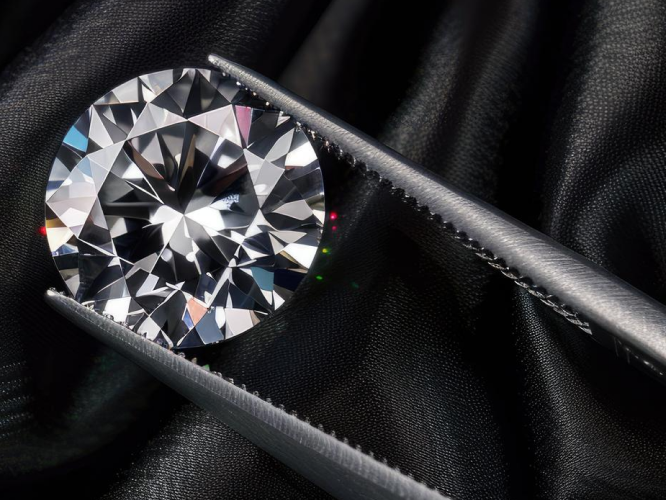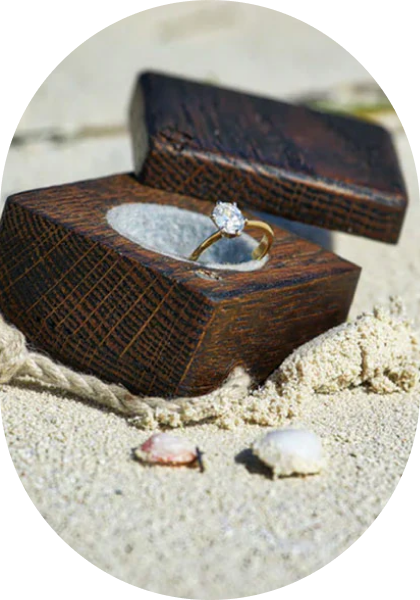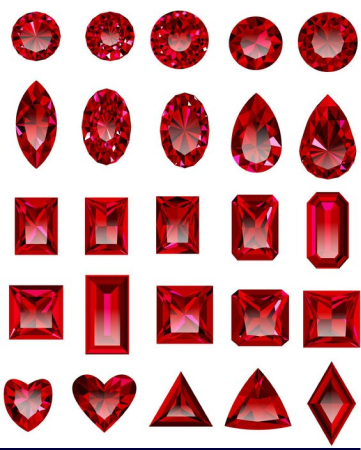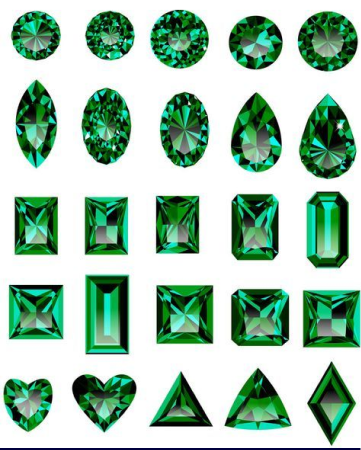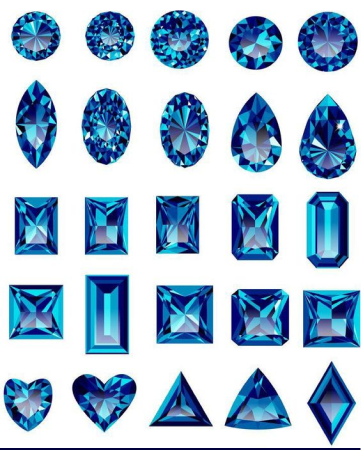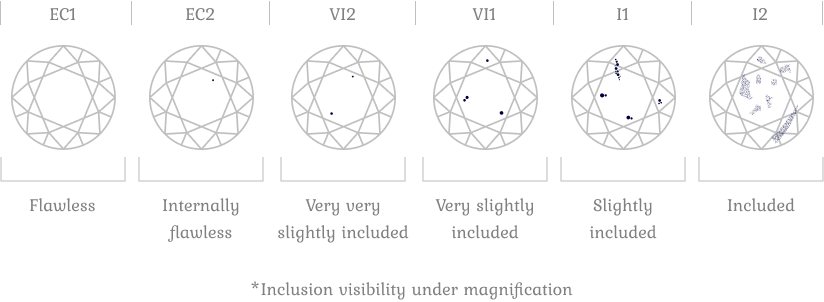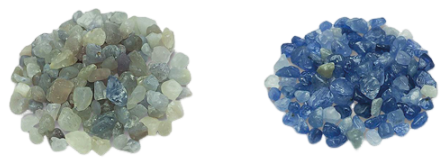What varieties of colorstones does AVINA Jewels offer?
Intensity of Color
When purchasing colorstones, the intensity of color should be your primary focus, as it directly impacts the long-term value of the stone.
The most sought-after intensity is Vivid as it strikes the perfect balance of color saturation. A higher saturation results in a darker
appearance, which can lower the stone's value.
On the other hand, a faint intensity may alter the gemstone's color altogether— for example, a very light ruby can appear more pink than red.
Unlike diamonds, there is no globally recognized color grading system for colorstones. However,
AVINA Jewels follows the ICL’s seven levels of color intensity to ensure consistency and quality in our gemstone selection.
- Dark: a moderate to strong saturation with a very dark tone.
- Deep: a moderate to strong saturation with a medium dark to dark tone.
- Vivid: a vivid saturation with a medium to medium dark tone. Considered the finest
combination of
tone and saturation.
- Intense: a moderate saturation with a medium light tone.
- Medium Intense: a moderate saturation with a light tone.
Sapphires benefit from two further levels of colour intensity:
- Light: a slightly greyish or brownish saturation with a light tone.
- Very Light: a greyish saturation with a very light tone.
Carat
The size of a colorstone is primarily determined by its carat weight, with one carat equaling 0.2 grams. Carat weight is often measured using a point system,
where 100 points make up one carat. The larger the colorstone, the rarer and more valuable it becomes.
Due to their rarity, the price of certain colorstones increases exponentially with size.
For instance, a 10.0 carat ruby can be up to a hundred times more expensive than a 1.0 carat ruby.
Clarity
The ICL grading system is simple and straightforward, as it is based on what can be observed with the naked eye, without the need for magnification.
Unlike diamonds, inclusions in colorstones are common, widely accepted, and often help identify the stone's origin. There are three levels of clarity:
- “Eye Clean” (EC1 - EC2) indicates that inclusions are invisible to the unaided eye.
- “Visible inclusions” (VI1 - VI2) indicates that inclusions are only slightly visible to the
unaided eye.
- “Included” (I1 - I2) indicates that inclusions are obvious to the unaided eye.
Origin
the origin of colorstones can often be easily traced thanks to the unique inclusions found within each stone.
These inclusions can be considered the "birthmarks" of colorstones.
The origin of a colorstone significantly affects its value. Stones from renowned locations,
such as Kashmir sapphires or Burmese rubies, are highly prized due to their heritage and rarity.
Treatment
Most colorstones undergo treatment to enhance their color or clarity, a widely accepted practice in the jewelry industry.
These methods generally have no harmful effect on the stone and are simply a way to accelerate the process that nature couldn't complete.
Only the rarest and finest colorstones are found in a perfect state, requiring no further treatment, making them much more valuable.
The most commonly used enhancements are throughheating, oiling, and filling,, these include:
- Heat treatment (H).
- Heated treatment with flux (Hf1, Hf2, Hf3).
There are also treatments involving the use of oil or resin to fill certain fissures in the stone, enhancing clarity. These treatments are commonly applied to emeralds and are widely
used in the industry.
At AVINA Jewels, we prioritize offering only the most durable colorstones. Therefore, we do not sell items treated with abrasive methods that can weaken the gem,
such as heat treatments involving lead glass, cobalt, beryllium, or titanium.
Shape
The shape of a colorstone typically does not affect its price, as it is mainly a matter of personal preference. The most common shapes are Round, Oval, Cushion, and Pear.
Colorstones typically feature a combination of two cuts: the brilliant and the step cut. This optimizes the balance of vivid color and brilliance.
Similar to diamonds, the crown is often cut in a brilliant
style to enhance radiance, while the pavilion is step-cut to highlight the stone's intense color and vibrancy.
We also offer less conventional shapes, arranged in the three following categories:
- Rectangle (Octagon, Fancy Octagon and Baguette).
- Square (Square, Princess and Asscher).
- Other (Kite, Trilliant, Shield and Tapered Baguette).
Emeralds are typically cut into a rectangular shape, known as the emerald cut, to enhance their durability, as they are slightly more brittle than other colorstones.
Cost
Color, clarity, origin, treatment, and carat weight are key factors that influence the final price of a colorstone.
It's important to remember that high-quality gems are exceptionally rare and can see a significant increase in value.
Before purchasing a colorstone, it's advisable to have a clear idea of the quality you're looking for.
Consider what factors are most important to you and how they align with your budget.
What should I look for when purchasing
Colorstones?
Responsible Colorstone Sourcing
The tradition of colorstone mining dates back to the earliest days of civilization. Over time, it has grown into a thriving industry, spanning six continents and 47 countries.
Colorstone mining supports the livelihoods of many people, with around 75% to 80% of the world’s colorstones coming from artisanal, small-scale mining,
mainly run by family-owned businesses. While it provides an important income for communities, artisanal mining can sometimes result in poor working conditions and environmental
damage, as some miners lack the knowledge or technology to safeguard themselves and their surroundings.
How do we improve this? Industry experts agree that boycotting all colorstone sales would negatively impact local
communities that rely on this trade for their livelihoods. However, improving the industry has become essential to ensure the well-being of workers and to
prevent further environmental harm. Sustainable practices,
better safety measures, and access to modern technologies are key to fostering a more responsible and ethical colorstone industry.
One of the major challenges in improving the colorstone trade is the difficulty in tracing a stone's origin. From mine to market,
a colorstone typically passes through multiple handlers and traders, often across different continents,
making it difficult to ensure transparency and accountability throughout the supply chain.
A crucial first step in improving the industry is for retailers to clearly map out their supply chain.
At AVINA Jewels, we are committed to better understanding our own supply chain,
allowing us to make informed decisions that prioritize sustainability and identify areas for continuous improvement.
As we begin this journey, we acknowledge that changing the colorstone industry will require time, patience, and dedication. However, even small steps can lead to meaningful change. By first educating ourselves
on how colorstones are produced, we can share that knowledge with others and help discover sustainable alternatives that also support the well-being of miners.
We are partnering with our suppliers to encourage better practices within the industry and are actively working to offer our customers colorstones that
can be traced directly back to the mine. Our suppliers are also collaborating with vendors to maintain shared
commitments to responsible sourcing, which may include independent desk-based assessments and, when possible, on-site evaluations of mines.
Individual Certification
Unlike diamonds, colorstones do not benefit from an international grading standard. AVINA Jewels are working
closely with the International Colored Colorstone Laboratory (ICL)
to
provide individually-certified colorstones that comply with our exacting standards.
We proudly offer a curated collection of colorstones sourced from esteemed laboratories with a proven track record
in gem testing and appraisal. Our trusted partners include GIA, AGL, Lotus Gemology, Pearl and Gem Lab, GRS, Thai Lab, and the London Colorstone Laboratory.
Each certification includes the colorstone's color and clarity grade (as determined by the laboratory), along with its carat weight and proof of origin.
High-quality Photographs and Visuals
Buying a colorstone requires careful research and preparation. To assist you in making
an informed choice and ensure transparency, we provide high-quality photographs and a 360° view of each individual stone.
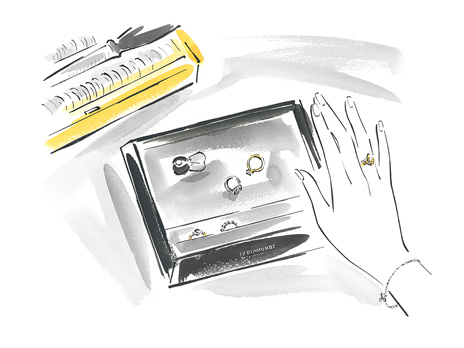

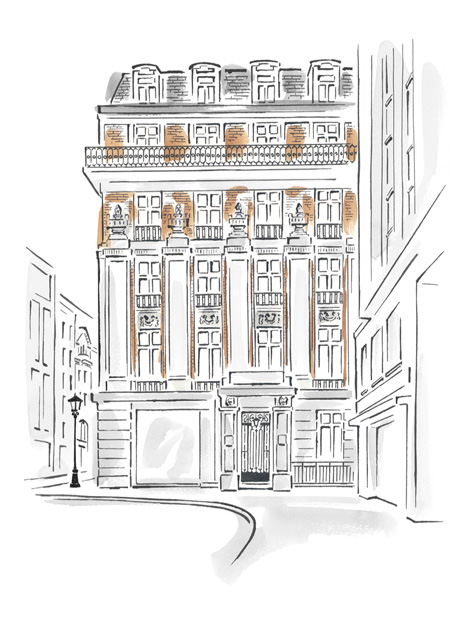


 Book an Appointment
Book an Appointment
 IN / INR
IN / INR
 my bag
my bag
 FAQs
FAQs
 visit our showroom
visit our showroom
